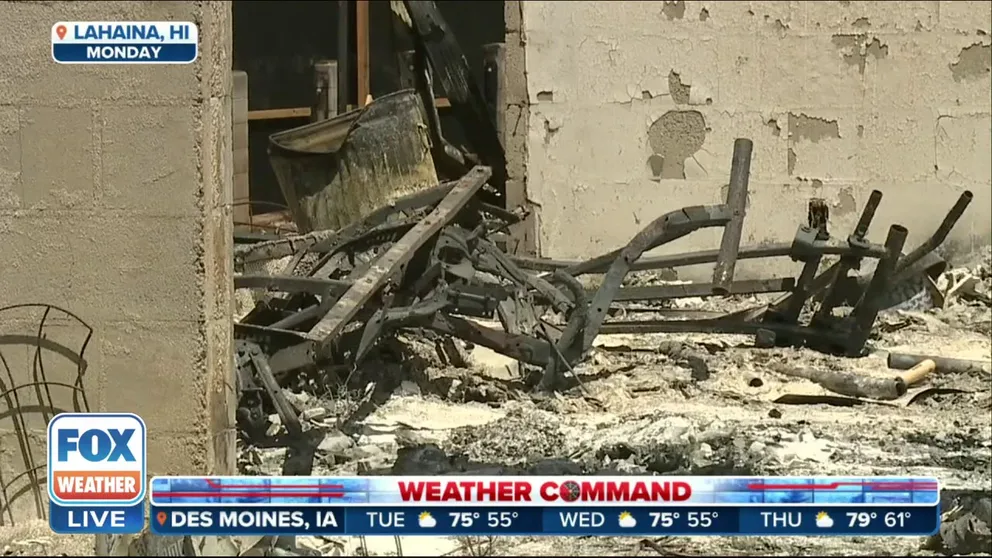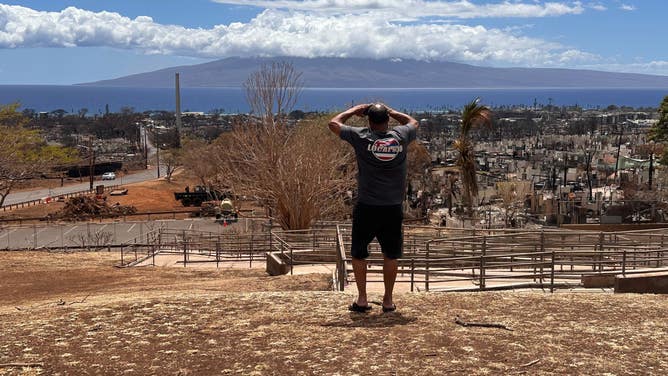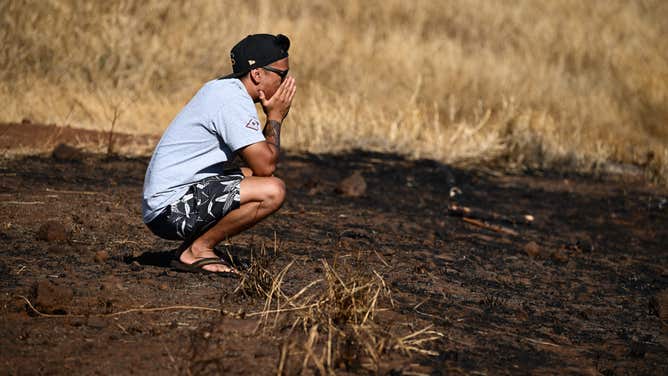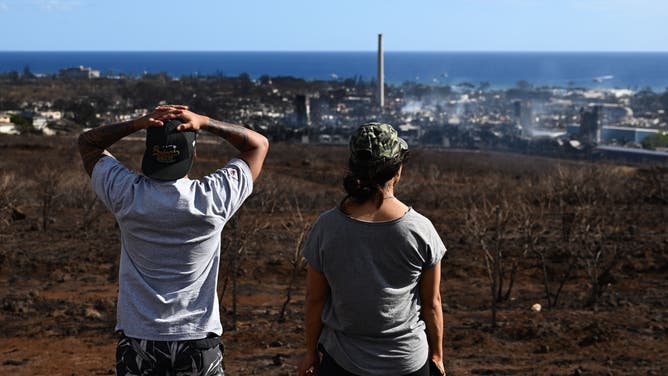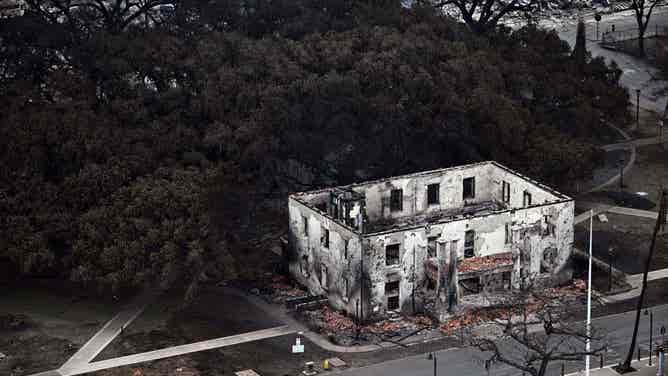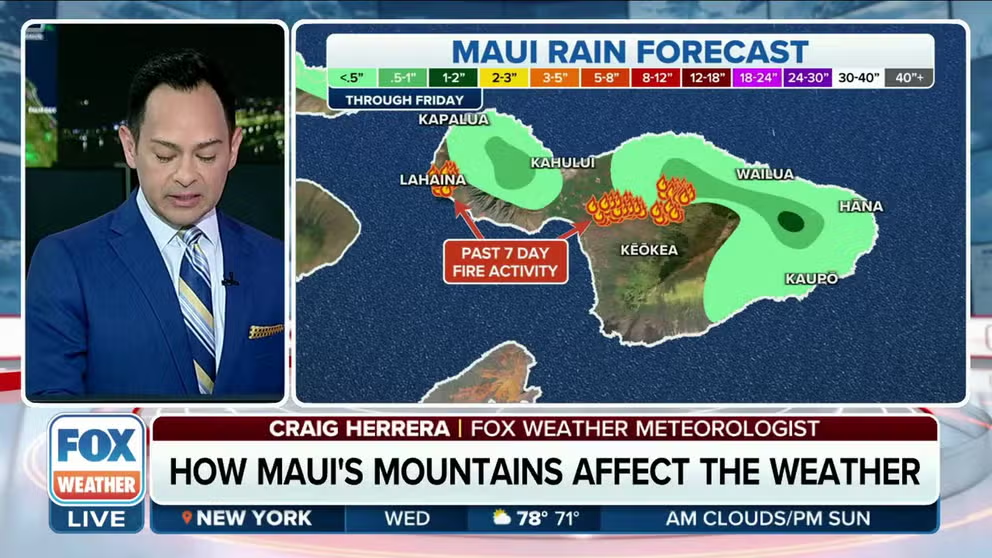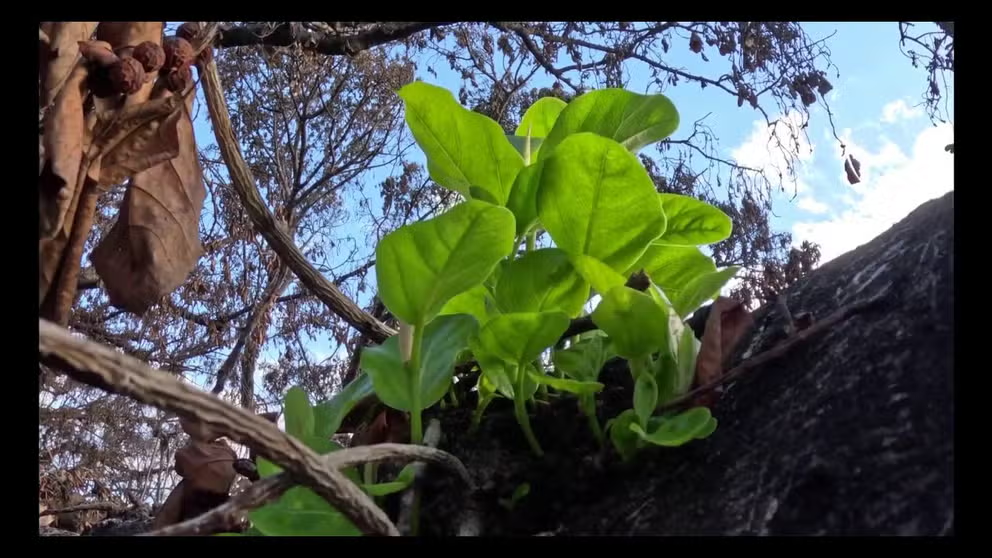Maui wildfire report highlights heroics of firefighters during deadly wind-whipped firestorm
Hawaii leaders continue to examine the response to the August 2023 wildfires that claimed nearly 100 lives, becoming the deadliest wildfire in modern U.S. history. The after-action report highlights a deadly combination of extreme winds, low humidity and Maui’s unique landscape that created a recipe for a disaster.
Lahaina residents begin painful task of sifting through debris of homes for first time since deadly Hawaii wildfires
FILE VIDEO: Some Lahaina, Hawaii, residents have been allowed to return home and begin to sift through what's left nearly two months after deadly wildfires in Maui.
LAHAINA, Hawaii – A new report on the Maui wildfires found that the emergency response to the deadliest fire in modern U.S. history was no match for the extreme weather and fire conditions that contributed to the August 2023 blazes that claimed nearly 100 lives.
Fire departments routinely conduct post-incident reports after significant fires. Due to the size and scope of the deadly Maui wildfires, Maui Fire Department Chief Brad Ventura asked the Western Fire Chiefs Association (WFCA) to conduct the after-action report. The association represents fire service agencies across 11 western states and the Pacific islands.
Much of Lahaina on Maui was destroyed in the fires, leaving an apocalyptic scene. The four major fires – Olinda, Kula, Pulehu and Lahaina – burned more than 6,700 acres and destroyed more than 2,170 structures.
In the weeks after the fire, the number of missing continued to shrink. At its peak, the list of the missing included more than 1,700 people.
The after-action report found that despite nearly every Maui Fire Department staff and vehicle being deployed during the fires, the emergency response "did not break but rather found itself outmatched by the extreme weather and fire conditions."
BEFORE-AND-AFTER SATELLITE IMAGES OF MAUI AFTER DEADLY WIND-DRIVEN BRUSH FIRES
The report highlights a deadly combination of extreme winds, low humidity and Maui’s unique landscape, which created a recipe for disaster.
Multiple brush fires began on Aug. 8, 2023, fueled by wind gusts of more than 70 mph and dry conditions. The area most devastated by the fires was under severe drought at the time, and the entire island of Maui faced severe to abnormally dry drought conditions in August 2023.
How Maui's mountains affect the weather, brush fires
FILE VIDEO: Winds down slope from the mountains and heat up and compress keeping the south side of the island dry.
According to the report, firefighters responding to the Upcounty fires commented that the grass was "crunching" under their feet. The region is usually green due to its higher elevation and increased rainfall.
Ahead of the fires, the National Weather Service had issued Fire Weather, or Red Flag Warnings, for Aug. 7-9, 2023, due to lower humidity and winds from Hurricane Dora moving about 600 miles south of Hawaii.
The report found that the Red Flag Warnings were not considered unusual for the island, and the Maui County Fire Department did not add additional staffing or pre-position resources due to the warnings.
"With Hurricane Dora being 600 miles away and Maui being the windiest island in the state, there was not a heightened sense that this Red Flag Warning would be much different from past events," investigators wrote.
These weather conditions would make firefighting nearly impossible, limiting ground and aerial resources and rapidly spreading flames.
Aerial resources were limited or grounded during the most significant firefights because of strong winds. The report found that winds gusting between 40 and 50 mph helped run the fire into Lahaina neighborhoods, beginning the deadly urban firestorm.
Urban firestorm: Winds fueled flames, downed power lines
The after-action report details a timeline of Aug. 7-9 events as they unfolded and how crews were working against the weather to control the situation.
According to the report, Aug. 7 was a normal call day for the department, with winds between 20 and 30 mph. The weather activity was not considered unusual.
Just after midnight on Aug. 8, the Olinda Fire in the Upcountry areas started near a bird sanctuary. After beginning the initial attack, the crew had to regroup due to "extremely strong winds" of more than 50 mph.
The winds snapped trees, downed power lines and pushed the fire downhill. At this time, the Maui Fire Department had dedicated 40% of its resources to battling the Olinda Fire.
HAWAII GRAPPLES WITH WORST DISASTER IN STATE’S HISTORY AS DEATH TOLL RISES
After 4 a.m., evacuations were ordered via Maui County Police, and additional resources were brought in to try and contain the fire. Still, perimeter control was not possible because of the strong winds, according to the report.
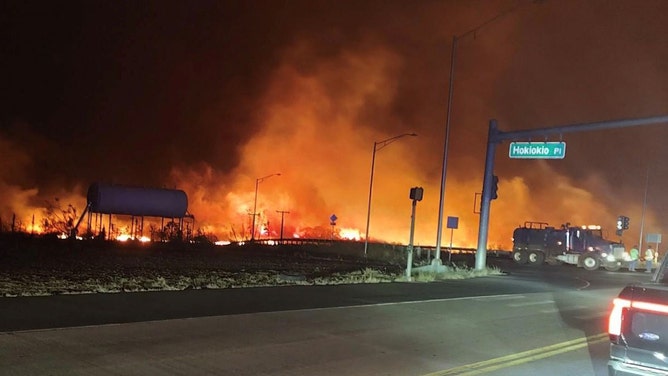
The intersection at Hokiokio Place and Lahaina Bypass is seen Tuesday evening, August 8, 2023, as wildfires burn in Maui County, Hawaii.
(Maui County / FOX Weather)
At 6:35 a.m., the first Lahaina Fire ignited on Lahaianluna Road near a power pole. Winds pushed the grassfire into a solar farm and began threatening structures. Evacuations were ordered for Hale Mahaolu and Lahaina Bypass.
Despite crews reporting 100% containment of the first Lahaina fire at 8:52 a.m., weather conditions worsened, knocking down power poles and trees and blowing debris throughout Lahaina. Additional resources, including water tankers, were sent to help the Olinda Fire, which was increasing in size. The report noted spotty cell service and challenges accessing water supplies and roads.
By 11:25 a.m., the Kula Fire started impacting Haleakala Highway and prompted evacuations of the Kulamanu subdivision.
"As the day evolved, strong downhill winds pushed the fire further west down the drainage features, where there were numerous homes without much defensible space," the report said." As the winds began to swirl, the fire began running back uphill, destroying homes."
Olinda and Kula Fire crews reported losing public water supplies, and water tankers were in short supply.
At 3:26 p.m., evacuations from the Lahaina Fire were ordered as the fire was "now a direct threat to the Lahaina community."
'GOOD NEIGHBORS': MAUI COMPANIES JUMP TO AID ISLAND COMMUNITY AFTER DEADLY BRUSH FIRES
The report details the complete chaos of residents attempting to evacuate Lahaina but being blinded by the smoke. It also pointed to the heroic actions of fire crews.
According to the Maui Fire Department, firefighters shuttled people between shelters in their personal vehicles and battled fires when they knew their homes were burning down.
An off-duty Ocean Search Officer drove into the Lahaina fire multiple times on his moped to rescue people.
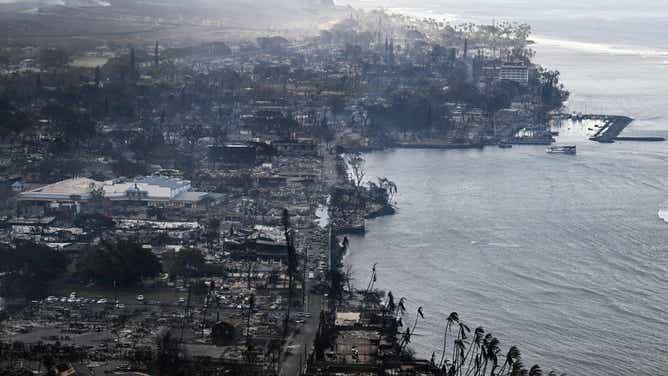
An aerial view shows destroyed homes and buildings that burned to the ground around the harbor and Front Street in the historic Lahaina Town in the aftermath of wildfires in western Maui in Lahaina, Hawaii, on August 10, 2023.
(Patrick T. Fallon / AFP / Getty Images)
By the evening of Aug. 8, crews battling the Pulehu Fire, which would burn nearly 3,300 acres, noted the winds "shifting, swirling and going from the east to west now."
"With very limited resources, these crews were able to stop the forward process of the largest of the four major wildfires," authors of the report wrote.
By nightfall in Lahaina, some firefighters carried victims on their backs over downed power lines to medical aid.
The winds did not begin to let up until daybreak on Aug. 9, when the full scale of the firestorm's devastation became visible.
Plan of action for disastrous weather events
Maui County Fire Chief Brad Ventura held a news conference Tuesday after the report was released, saying many recommendations in the report the MFD is already addressing, including pre-positioning fire personnel during Fire Weather Warnings.
While the after-action report offered 111 recommendations, the report authors note the "core problem" is getting the public to raise their situational awareness and become part of the solution.
Lahaina's historic banyan tree torched by Maui wildfires showing signs of new life
A video shared by the Hawaii Department of Land and Natural Resources shows the 150-year-old Banyan Tree sprouting green leaves after being scorched by the recent wildfires in Lahaina.
The report stated: "Maui has the fuel, wind, temperatures and relative humidity, plus the urban interface, to create a public policy conundrum. These factors, coupled with climate change, indicate the need to change past wildfire practices and policies."
The Maui after-action report comes a day after the Attorney General’s office released its investigation with the Fire Safety Research Institute.
PETS RESCUED FROM HAWAII WILDFIRES HAVE PAWS BURNED 'DOWN TO THE BONE'
"While the investigations and studies can be helpful, the pain, trauma and suffering that our residents have endured continue to be our primary focus," Maui County Mayor Richard Bissen said. "I remain committed to bringing Lahaina residents back home so they can take additional steps toward healing."
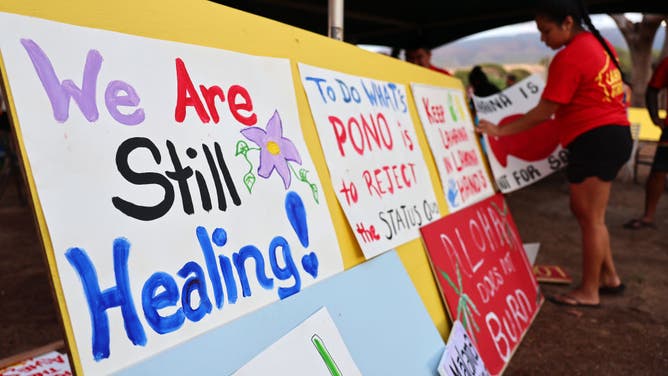
A community member hangs a sign at a 'Lahaina Strong' gathering on October 6, 2023 in Lahaina, Hawaii. Community members painted signs expressing their opposition to the October 8th start of tourists returning to west Maui following the devastating wildfire. (Photo by Mario Tama/Getty Images)
(Getty Images)
The county said it delivered thousands of videos, images and documents to assist with the AG investigation, including 8,000 videos and media files and 118 gigabytes of data.
"The most important part is how we prevent, how we mitigate, how we can prepare for future disasters," Bissen said.
The reports do not include the cause and origin of the fires because the cause is still under federal investigation by the Bureau of Alcohol, Tobacco, Firearms and Explosives.
